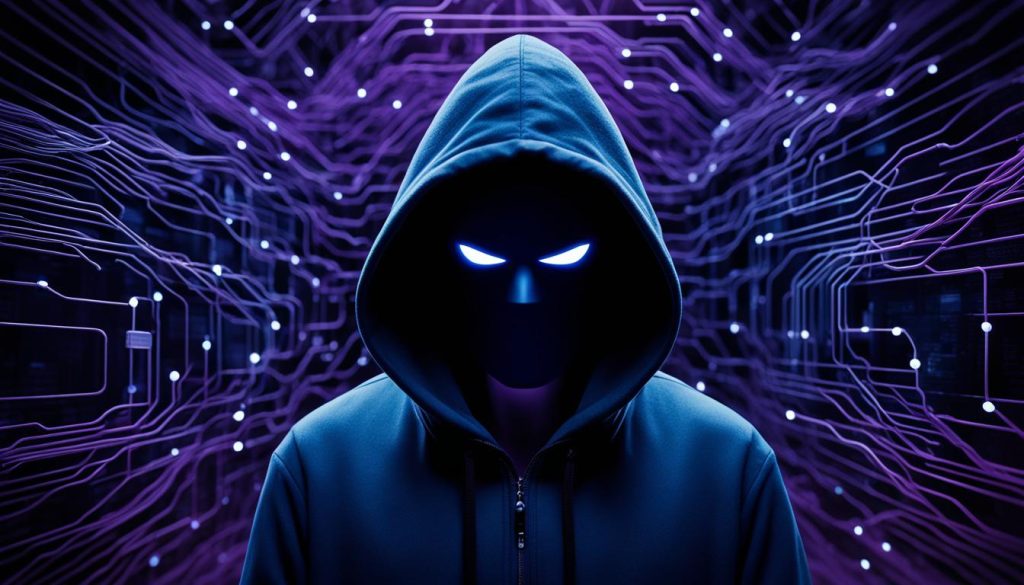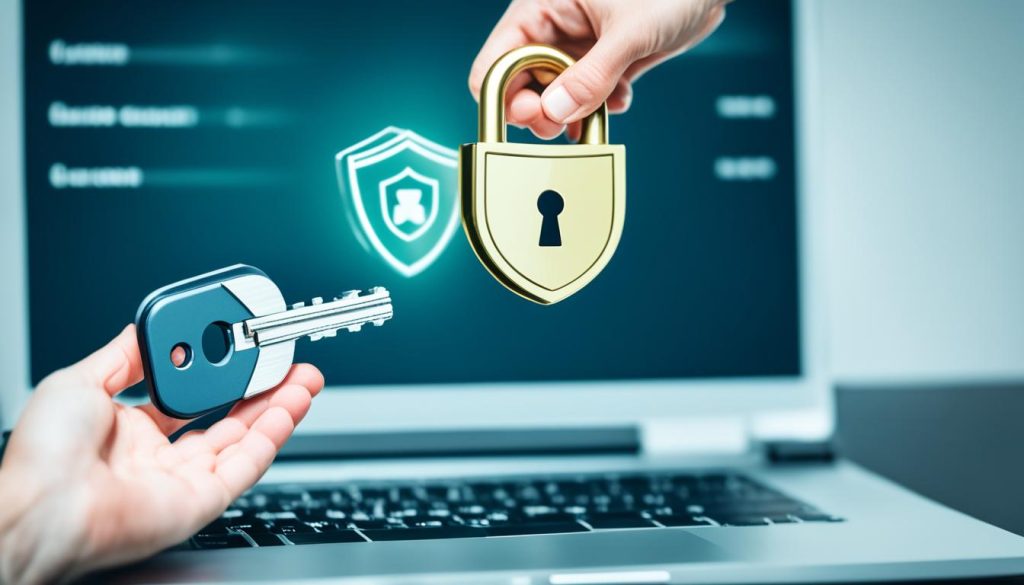Did you know? In Q2 2022, Over 15 billion personal data records were found on the dark web.
If you’ve ever considered the dark web a threat to personal data, your concerns are valid. Imagine waking up to find your bank account wiped clean, your personal information sold, and your identity stolen. This nightmare scenario is becoming all too common as cybercriminals scour the dark web for vulnerable data. But the good news is that you can take practical steps to keep your data safe from the dangers of security breaches. And you do not have to be a cybersecurity expert to achieve that.
Let’s look at what the dark web is, how it threatens your personal data and steps you can take to keep your online accounts safe.
What Is The Dark Web And Why Is It A Threat?
In today’s digital world, the dark web is a big worry for those wanting to keep their personal info safe.
The dark web is a hidden, encrypted part of the internet you can’t reach like regular websites. It is the segment of the internet that is not indexed by traditional search engines like Google.
It includes any online content not accessible through standard search engines, such as private databases or password-protected websites. The dark web is intentionally hidden and requires specific software, like Tor (The dark web browser), to access it.

One peculiarity of the dark web is the anonymity it offers users and websites alike. This anonymity can be used for legitimate purposes such as protecting privacy in restrictive regimes.
But here’s why it is a threat. It also creates an enabling space for illegal activities. Let’s call it a marketplace where cybercriminals trade personal information, including credit card details, social security numbers, and even full identities. Hence, protecting your data is non-negotiable.
How Can Your Personal Data End On The Dark Web?
You can lose your data to the dark web in more ways than one, many of which are out of your direct control.
- Data breaches: Hackers target companies to get into their databases. These databases often have lots of personal data like names, addresses, and financial details.
- Phishing scams: Phishing attacks can trick people into sharing their sensitive info. This info is then sold or used for identity theft on the dark web.
- Malware and hacking: Malicious software and hacking can get into devices and take personal data. This data is then shared on the dark web.
- Compromised Online Accounts: Weak or reused passwords lead to account breaches, which can expose other linked accounts.
- Third-Party Data Sharing: Data shared with insecure partners or sold by data brokers can be compromised during a breach.
- Insider Threats: Careless handling of data by and employee can result in your information being sold or exposed.
- Public Wi-Fi and Unsecured Networks: Hackers can intercept data on public Wi-Fi and capture sensitive information without your knowledge.
What Happens When Your Personal Data Ends Up On The Dark Web?
Having your data on the dark web exposes you to significant risks that can have long-lasting consequences. Once your personal information—like credit card numbers, social security details, or login credentials—ends up on the dark web, it can be sold multiple times to cybercriminals.
These criminals can use your data for identity theft, fraudulent transactions, or even to create fake accounts in your name. The repercussions can range from drained bank accounts to damaged credit scores and recovering from such breaches can be both time-consuming and costly. Additionally, because the dark web operates anonymously, it’s challenging to trace or stop the misuse of your information. It is essential to regularly monitor your accounts and take proactive cybersecurity measures. This way, you can protect your personal data from ending up on the dark web and minimize the risks if it does.
Practical Steps To Protect Your Data
Now that you know why the dark web is a threat and where the risks lie, here are practical steps you can take to protect your data:
Use Strong Passwords. Add A Good Password Manager To The Mix
We can not overemphasize the importance of creating strong and unique passwords for each of your online accounts. A strong password should be at least 12 characters long and include a mix of letters, numbers, and special symbols. Since it may be difficult for most people to remember multiple complex passwords, consider using a password manager. These tools can generate and store passwords securely. It saves you the trouble and protects your data from the dark web..
Enable Two-Factor Authentication (2FA)
Two-Factor Authentication (2FA) adds an extra layer of security to your accounts. Even if someone obtains your password, they would still need a second form of verification to access your account, such as a code sent to your phone or generated by an authenticator app. Whenever possible, enable 2FA on your online accounts, particularly for sensitive services like email, banking, and social media.
Regularly Update Your Software
Keeping your operating system, apps, and antivirus software up to date is essential for protecting your data. Cybercriminals often exploit vulnerabilities in outdated software to gain unauthorized access. Set your devices to update automatically or regularly check for updates manually to ensure you’re protected against the latest threats.
Secure Your Network
A secure network is your first line of defense against cyber threats. If you’re using a home Wi-Fi network, make sure it’s password-protected with a strong password and that the router is using WPA3 encryption, the most secure standard available. When you’re on the go, avoid using public Wi-Fi for sensitive activities. Instead, use a Virtual Private Network (VPN) to encrypt your internet connection, ensuring that your data remains private even on unsecured networks.
Be Cautious of Phishing Scams
Phishing scams are one of the most common ways for cybercriminals to steal your data. Always be skeptical of unsolicited emails, messages, or questionable links, especially if they ask for personal information. Check the sender’s email address for inconsistencies, and hover over links to see where they actually lead before clicking. If you’re unsure about a message’s legitimacy, it’s best to delete it or contact the organization directly using official channels.
Monitor Your Accounts Regularly
Regular monitoring of your financial and online accounts can help you catch any suspicious activity early. Review your bank statements, credit reports, and account activity for any unfamiliar transactions or changes. Many financial institutions and credit card companies offer alert services that notify you of any unusual activity, giving you the chance to act quickly if something seems amiss.
Advanced Protection Techniques
If you want to go the extra mile in protecting your data, consider these advanced techniques:
Encrypt Your Data
Encryption is a powerful tool that scrambles your data, making it unreadable to unauthorized users. Many devices and software offer built-in encryption options. Make sure to enable encryption on your devices, especially for sensitive files and communications. This way, even if your data is intercepted, it cannot be easily deciphered.
Regularly Backup Your Data
Regular backups ensure that you can recover your information in case of a cyberattack, hardware failure, or accidental deletion. Store backups in multiple locations, such as an external hard drive and a secure cloud service. This redundancy protects your data and ensures you can quickly restore your systems if needed.
Invest in Security Software
Using reputable security software is a must for safeguarding your devices. Antivirus programs can detect and neutralize malware, while firewalls can prevent unauthorized access to your network. Choose a comprehensive security suite that includes real-time protection, and keep it updated to guard against the latest threats.
What To Do If Your Data Is Compromised
Your data could be compromised and it would be no fault of yours. If you suspect that your information has been exposed on the dark web, here’s what you should do:
- Change Your Passwords: Update the passwords for any compromised accounts, and ensure that the new passwords are strong and unique.
- Contact Financial Institutions: If your financial information is at risk, notify your bank or credit card company immediately. They can help you monitor for fraud and may issue new cards.
- Monitor Your Credit: Place a fraud alert on your credit reports and consider freezing your credit to prevent new accounts from being opened in your name.
- Consider Identity Theft Protection: In severe cases, consider signing up for an identity theft protection service. These services monitor for suspicious activity and can assist in restoring your identity if it’s stolen.
Final Thoughts…
Cybercriminals and guardians of the dark web are always on the watch for vulnerable data. While you might have zero control over what goes on in the dark web, you have control over your data. And you can minimize the risk of exposure. Remember, cybersecurity isn’t just about reacting to threats—it’s about staying ahead of them. Prioritize your digital safety.



1 Comment
Pingback: The Dark Web and Web3 Funding: What You Didn’t Know - Giditech